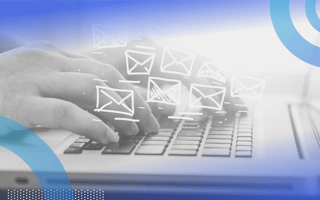Email marketing requires the consent of an individual to receive emails from a particular company, which is typically provided through the company’s website or if visiting a physical location. A company then maintains its list of subscribers manually or, more likely, through its Email Service Provider (ESP), such as Mailchimp, Salesforce Marketing Cloud or Klaviyo.
How to Send a Marketing Email
With a proper list of subscribers, a company can develop its own email marketing strategy in order to reach the intended audience. While there are many email marketing best practices and types of marketing emails, in order to actually send an email, a company must create content, which includes, but is not limited to:
How Do You Write a Marketing Email?
- Subject Line: The short bit of text that appears next to the sender name in an inbox. The most effective subject lines are between 20-50 characters.
- Preheader: The secondary text next to the subject line. The most advanced email marketers use this text as another way to convince the reader to open the email.
- Email Header: The main headline once the email is opened. Well-designed marketing emails use a consistent font and size for headers.
- Email Body: The text, usually in paragraph form, within the email. It’s important to remember to avoid making your emails too text-heavy.
- Images: Selected images that represent the company and bring more color to the email. The most design-advanced emails have high resolution images that readers can click.
- Links: The website pages the company would like its subscribers to click on, usually a product page or the main website.
Once you’ve created the email content, the company can decide which audience should receive its email, if not the full list of subscribers. Dividing the subscriber list is called segmentation and some segment examples include:
- Engaged subscribers: Those who have opened and/or clicked on previous emails
- Previous buyers: Those who have purchased the company’s product or service in the past
With a finished email and a segment selected, you can send the email through the ESP. Once the ESP sends the email, the recipient’s email client (such as Gmail, Yahoo, or Outlook) reviews the content of the email, as well as the sender, and either places the email in the recipient’s inbox, spam folder or blocks the email altogether.
Why Is Email Marketing Important for Your Brand?
Email marketing is widely calculated as the marketing tactic with the highest return on investment (ROI) at $36 in revenue per dollar spent. In addition, email marketing is a relatively low-cost method to keep a company’s brand top of mind for customers by reminding them of relevant promotions and information using the method that’s still preferred by almost all consumers.
Email Marketing Advantages and Disadvantages
Advantages of Email Marketing
Sell Your Products
Companies with effective email marketing strategies see an uptick on days where they send emails.
Keep Your Audience Engaged
An email is a great way to remind your customers about your brand and keep you top of mind.
Inform Your Subscribers of Updates and Promotions
While you work hard to improve your business, it is important to provide those updates to your customers.
Accumulate Subscriber Data
Each ESP will track opens, clicks and (usually) orders related to an email campaign. The ESP then ties those metrics back to the individual subscribers. You can use these metrics to determine what your subscribers are most interested in. For example, if you send an email with products in eight different colors, determining which color generated the most clicks could help your merchandising strategy.
Disadvantages of Email Marketing
Can Cause Disruption
Find the balance between generating revenue through email without flooding your customers’ inboxes with unwanted emails. Bombarding your customers with irrelevant messages can lead them to disengage with your brand.
Risk Annoying Your Subscribers Out of Buying
Maybe your customers do plan to buy again in the future, but not right now. Sending too many emails can lead to an unsubscribe instead of another purchase.
Mistakes and Typos Reflect Poorly on Your Brand
Emails can show off your brand, but a mistake can damage your reputation with your subscribers.
Alternatives to Email Marketing
There are many alternatives to email marketing including:





